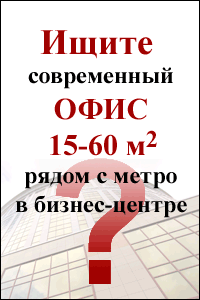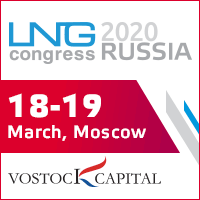Two strategic ‘Streams’ - Russia’s symmetric reaction to new challenges

For governments and companies, the means have always justified the ends when it comes to using traditional competitive advantages to securing strategic goals on the international markets. This is mostly true for western governments and companies, which have a long tradition of applying this principle on cross-border markets.
With regard to Russia, it is only recently that it began to actively use similar approaches in the establishment of cooperation with its old and new partners in the global gas industry. For instance, Moscow, taking into account the reduction of gas demand caused by the global economic crisis, poor prospects of realization of the trans-Caspian pipeline, as well as Turkmenistan’s commitment to export gas to Iran and China, and also the accident on the Central Asia-Center-4 pipeline, started in June 2009 to put serious pressure on Ashgabat to reduce the volume and price of gas it sells to Gazprom and also to move to a new price that will be determined by a mutually agreed formula.
Ashgabat succumbed to the pressure, and in mid-December 2009, the two parties reached a mutually acceptable agreement to amend the existing contract concluded on April 10 2003 that will run for 25 years. Under the new agreement, in 2010, Russia will buy almost 30bln cubic meters of natural gas, or about 40%, less volume from Turkmenistan than was previously agreed in the old contract, and at a new price that will be determined by a formula reflecting the prevailing price situations on the European gas market.
The unexpected worsening of the Russian-Turkmen relations on gas supply led to revitalization of the Nabucco project by those behind the pipeline, evident in the signing of a landmark agreement on August 13 2009 in Ankara by transit countries: Turkey, Bulgaria, Romania, Hungary and Austria. However, the sources of energy for filling Nabucco, the main question hanging over the project, remained unanswered by the signatories to the agreement.
"Russia, by simultaneously executing a range of strategic projects aimed at improving and developing its energy export routes, wants to achieve some concrete strategic objectives on the international gas market.”
In general, the prospects of the South Stream are much brighter and more exciting, but its realization will not be very easy for Russia. This, first and foremost, stems from the fact that Turkey is a player that has considerable experience in negotiating and defending its interests through linking economic proposals with the possibilities of gaining political concessions and compromises from negotiating partners.
Key factors influencing the development of Russian gas streams today
The important factors driving events around the Russian gas stream projects are many and diverse. One is the aggravation of Washington and Tehran relations over the latter’s nuclear program, which, according to U.S. politicians and military experts, is being executed to boost the Islamic republic’s military ambitions in the region. This tension has virtually nullified the Turkish-Iranian agreement on the possibility of purchasing and re-exportation of Tehran’s 17.5bln cubic meters of gas a year to Europe. The second factor is financial, resource and bureaucratic difficulties in the implementation of the Nabucco project, while the third factor is the unprecedentedness of Russia’s assertiveness and consistency in lobbying the Nord Stream and South Stream pipeline projects.
This is evident in the number of attractive offers and commercial concessions Moscow has given to its potential partners, including the construction of the Blue Stream-2 pipeline to Turkey to meet the latter’s anticipated growth in natural gas demand to about 66bln cubic meters a year by 2020, from 36bln in 2009, and also delivery of gas to Israel and, possibly, to Cyprus. Also, one needs to note Moscow’s readiness to participate in the construction and operation of the Samsun-Ceyhan oil pipeline, designed to relieve the heavy tanker traffics in the straits of Bosporus and Dardanelles; transportation, processing and joint marketing of oil products as well as new and more advantageous offers to build the first nuclear power plant in Turkey by a Russian-Turkish consortium.
The fourth key fey factor influencing the development of Russian gas streams today is Turkey's hope that playing the ‘Russian card’ will help it in its negotiations with the United States and European Union on a wide range of domestic and foreign policy issues. Under these circumstances, Ankara can really become a key ally of Moscow in the region in the short-term. In return, Russia will not only become a major supplier of oil and gas to and through Turkey to other destinations, but will also have a serious foothold on the Turkish energy market. For instance, in December 2004, Gazprom and Botas, a Turkish pipeline company, signed a memorandum on cooperation in the gas industry that envisages supplies of gas to Turkey as well as participation in projects on the installation of gas service, gas supply and development of underground gas storage facilities in Turkey.
Currently, according to Turkish experts and media reports, Gazprom has already bought a 71% share of the Turkish company, Bosphorus Gaz Corporation AS, which presently controls just 3% of the Turkish gas market, but the subsidiary will surely be Gazprom’s key asset in expansion and realization of its business ambitions in the country, including the privatization of its gas distribution networks. Here, Moscow's prospects are much more promising than in the Eastern European countries with strict EU regulations on the acquisitions of energy companies and their operations.
Besides, Russia has given a preliminary approval to join the Samsun-Ceyhan pipeline project and hope not only to boost Bulgaria’s consideration in the Burgas-Alexandroupolis oil pipeline, where negotiations over the economic details have been going on for seven years, but also to get a 50% share in the project.
"The availability of new alternative export capabilities will give Moscow more room for maneuver and possibilities to control prices on transit policy issues.”
The present position of Ankara has become more independent than it was 10 years ago from those of Brussels and Washington. Indeed, it has become even defiant of them. Consequently, Turkey's policy is more important than those of Ukraine and Bulgaria to the Kremlin's strategies in the Black Sea-Caspian region, Central Asia and Middle East. Besides, Turkey is much better as a transit country than Ukraine, an attractiveness that still remains even after the renegotiation of the terms of participation in the Blue Stream project. The new renegotiated participation terms in the Blue Stream project are more favorable for Turkey. At the time, the availability of new alternative export capabilities in the south-west direction will enable Moscow to control prices on transit policy issues.
Escalation of policy differences could be fatal for both parties
However, Russia and Turkey, in the long-term perspectives, will still remain strategic competitors in the region. For one, Ankara will try to use Moscow's interests in the region for its own goals. The progressive and large-scale advances in the Russian-Turkey relationships in all spheres should lead to the mollification of Kremlin's positions on a range of issues that are of geopolitical importance to Ankara.
But these positive expectations can materialize only if there are no tangible threats to Russia’s key strategic interests in this region. The appearance of such threats could lead to the deterioration of relationships and usher in one or all of the following negative scenarios in the relationships between Moscow and Ankara. One of such scenarios could be the activation of Turkey’s activities on the so-called post-Ottoman empire space, whose geographical area includes parts of the post-Soviet region, notably, the Crimea, Gagauzi and South Caucasus.
Another negative fallout could be Ankara’s attempt to revive pan-Turkism, which could spread over the territory with a Turcik nationality majority or simply inhibited by Turcik representatives. Interestingly, such territories include all of Russia’s Central Asia and some of its regions such Bashkortostan, Tatarstan and parts of Siberia. One more dangerous scenario could be the intensification of Turkish emissaries’ subversive activities, financial and other material support to the Islamic terrorists in Russia’s North Caucasus region.
Russian gas pipeline streams’ strategic missions
Thus, Russia, by simultaneously executing a range of strategic projects aimed at the improvement and development of its own system of energy export routes, wants to achieve some concrete strategic objectives on the international gas sales market. One of these is to create a reliable new system of effective ‘checks and balances’ in its alternative and substitutable gas export routes. Besides, it wants to radically decrease the probability and effectiveness of third parties’ efforts to exact price and transit pressures on its gas policies, and as a result, reduce the possibility of external forces to interfere in its economic, military and political policies.
"In general, the prospects of the South Stream are much brighter and more exciting, but its realization will not be very easy for Russia.”
Specifically, these policies will enable Moscow to shift its relations with nations producing strategic raw energy materials, notably, Central Asia states, to a more pragmatic, realistic and economically sound level. They will also enable it to block or try to obstruct attempts to ship extra gas via alternative routes to the European consumer market via pipelines that will bypass the Russian territory. These measures will help Moscow to strengthen its already strong positions on both the old and new, emerging gas markets in the region.
It is also important to note the U.S. concerns over the realization of the South Stream project and Turkey’s effectiveness in using the unique geopolitical situations in the region to supporting its EU membership aspirations. However, Russia has made huge steps in its attempts to pen strategic cooperation deals with key international players on the European gas market. For instance, it has already got the approval of Electricite de France to join the South Stream project, while it is currently nearing the conclusion of a similar agreement with Suez-Gaz de France to join the Nord Stream project. These are all additions to the list of top European energy giants such as German E.On, BASF, Dutch Gasunie, Italian ENI, which have already joined Gazprom in these strategically vital projects.
Besides, there are key factors promoting Russia’s new gas transportation projects. These, first and foremost, include the obvious weak economic justifications for and high risks of building new and alternative gas and oil supply routes from the Caspian area bypassing Russia to Europe. In this regard, the participation of Germany, Italy and France in these two geo-economically and geopolitically vital projects — the Nord Stream and South Stream — and, the retention of competitive interests among key players in the establishment of strategic partnership relationships with Russia, can help form an excellent economic basis for building a new system of pan-European security.
* This is the second and final part of this article the first part of which was published in the June edition
**The author is the deputy director of the Center for Political Studies at the Noravank Foundation in Armenia












 Web design,
Web design,